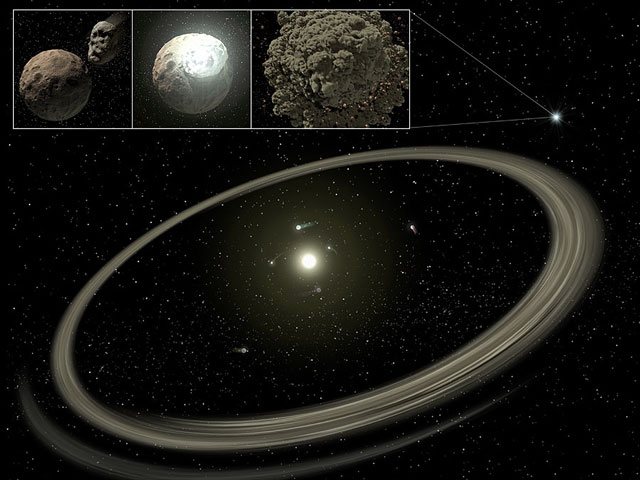Explanation: Why are some older stars surrounded by dust? Observations from the Spitzer Space Telescope by a team led by George Rieke (U. Arizona) were expected to show that young stars, on the order of one million years old, have large dust disks, while relatively older stars, between 10 and 100 million years old, have none. The conventional wisdom was that the dust disks surrounding young stars were still forming planets, while in older systems these disks had dissipated after planets had already formed. Unexpectedly, they found some older stars with the infrared glow of impressive rings or disks of dust. A possible explanation is that the old disks are remnant debris from violent collisions between many forming planets of rock. Resultant dust rings from such a scenario are depicted by an artist's illustration above.
1999 2000 2001 2002 2003 2004 2005 2006 2007 2008 2009 2010 2011 2012 2013 2014 2015 2016 2017 2018 2019 2020 2021 2022 2023 2024 2025 |
Yanvar' Fevral' Mart Aprel' Mai Iyun' Iyul' Avgust Sentyabr' Oktyabr' Noyabr' Dekabr' |
NASA Web Site Statements, Warnings, and Disclaimers
NASA Official: Jay Norris. Specific rights apply.
A service of: LHEA at NASA / GSFC
& Michigan Tech. U.
|
Publikacii s klyuchevymi slovami:
Spitzer space telescope - dust disk - planet formation - pylevoi disk - Formirovanie planet
Publikacii so slovami: Spitzer space telescope - dust disk - planet formation - pylevoi disk - Formirovanie planet | |
Sm. takzhe:
Vse publikacii na tu zhe temu >> | |
